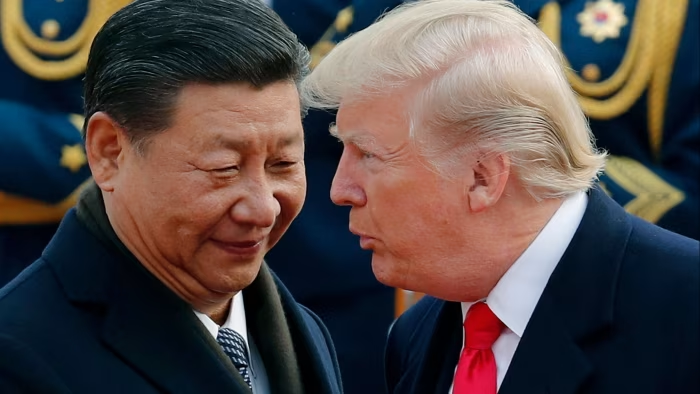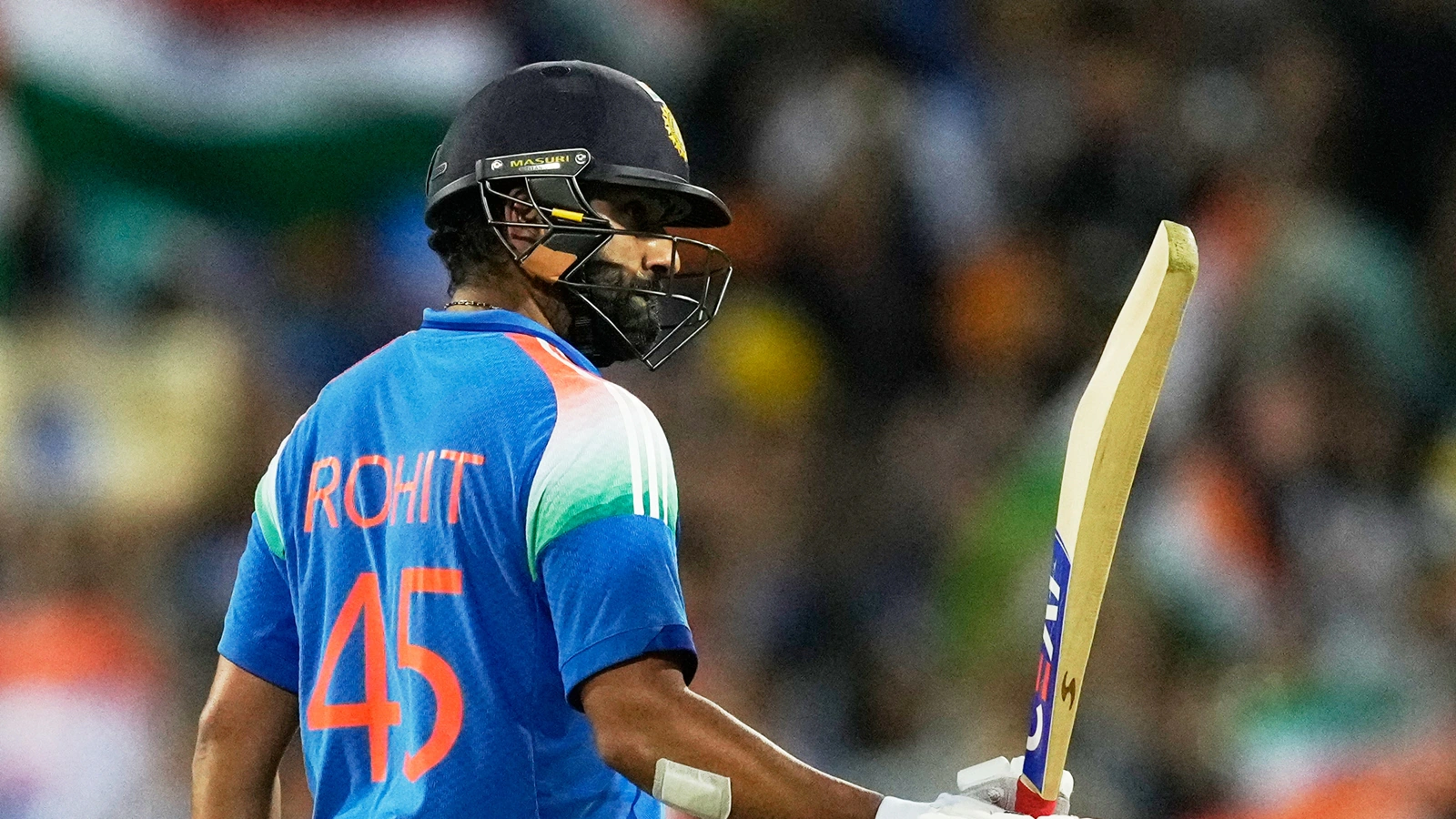Rohit Sharma may be remembered as an all-time great in ODI cricket whenever he hangs up his boots but for now, he knows he will need to perform to hold onto his spot in the Indian team which is why he abandoned his aggressive batting style in the…
Author: admin
-

Donald Trump and Xi Jinping meet for key trade talks
This article is an on-site version of our The Week Ahead newsletter. Subscribers can sign up here to get the newsletter delivered every Sunday. Explore all of our newsletters here
Hello and welcome to the working week.
Donald Trump is certainly…
Continue Reading
-

Apple Rebrands Apple TV+, Reading Between the (Apple TV+ Rebranding) Lines, Crunching Some Numbers for Apple’s Sports Spending
Today’s Above Avalon Daily update includes the following stories:
Hello everyone. This is going to be one of those weeks in which the schedule is a bit all over the place. For the past few days, I’ve been using and testing the updated Apple…
Continue Reading
-

Is Archer Aviation Poised for Growth After eVTOL Test Flight Success and 264% Stock Surge?
If you’ve been eyeing Archer Aviation lately, you’re not alone. The stock has been on a wild ride, up just 0.4% in the past week, but a jaw-dropping 264.2% over the last year. Plenty of investors are asking the same question: Is this growth just lift-off, or is turbulence ahead?
Why all the excitement? Headlines around successful eVTOL test flights and key partnerships with global airlines have helped fuel optimism. Investors also seem to be recalibrating their risk appetite, especially after government agencies signaled strong support for urban air mobility. That could have a lot to do with the stock’s staggering one-year gain and a recent 21.7% jump in just the last month. Even the year-to-date climb is impressive at 18.0%, hinting at a shift in how the market views both risk and opportunity in the air mobility space.
But the big question remains: Is Archer Aviation’s valuation truly justified? According to our assessment, the company lands a value score of 3 out of 6, meaning it’s undervalued in half the key areas we look at, but there’s still room for improvement. Of course, numbers only tell part of the story.
Let’s break down how we measure value, and then I’ll share what really matters most for those trying to get ahead of the curve.
Archer Aviation delivered 264.2% returns over the last year. See how this stacks up to the rest of the Aerospace & Defense industry.
A Discounted Cash Flow (DCF) model looks at a company’s future free cash flows, then discounts those projections back to today’s value to estimate how much the business is truly worth right now. This approach is widely used in growth sectors like aerospace where consistent profits might still be years away.
For Archer Aviation, the most recent free cash flow sits at -$472.3 Million, reflecting heavy investment and development costs. Analysts forecast that by 2029, annual free cash flow could swing to a positive $286 Million. Looking even further, projections out to 2035 estimate free cash flow climbing steadily each year, all denominated in US Dollars. These assumptions combine analyst forecasts for the next five years and are followed by extended projections to capture the full growth profile of the business as provided by Simply Wall St.
The results are compelling. The DCF analysis estimates a fair value for Archer Aviation at $29.72 per share. With the stock currently trading at a level that implies a 62% discount to this intrinsic value, the company appears deeply undervalued by this measure.
Continue Reading
-

Evaluating Valuation as Baricitinib Advances Toward Expanded Approval for Adolescent Alopecia Areata
New data from the Phase 3 BRAVE-AA-PEDS trial highlights baricitinib’s strong performance in adolescents facing severe alopecia areata. Incyte (INCY) and Eli Lilly now plan to pursue global approvals for expanded use based on these results.
See our latest analysis for Incyte.
Incyte’s momentum has really picked up this year thanks to positive trial results and recent pipeline updates, such as its advances in atopic dermatitis and cancer immunotherapies. The stock’s strong 31% share price return since January, along with a 40% total shareholder return over the past year, signals renewed optimism about both its near-term growth and long-term potential.
If Incyte’s clinical breakthroughs have you thinking bigger, this could be a smart time to discover See the full list for free.
With such a run-up in the share price and a fresh wave of optimism, investors have to ask: does Incyte still offer significant upside from here, or has the market already priced in the expected growth?
The most popular narrative among analysts puts Incyte’s fair value at $84.76, which is almost $6.50 below the recent closing price. This signals a view that current market optimism has gone a little too far. Let’s examine one of the biggest factors feeding this analyst consensus.
Recent price target increases highlight optimism about Incyte’s commercial execution, particularly following positive updates on flagship therapies and confidence expressed by new leadership.
Read the complete narrative.
Want the story behind this valuation? Dive in for analysts’ bold projections on future profit margins, share growth, and a crucial earnings target that could make or break the investment case. The real surprise: see how a future multiple drives everything.
Result: Fair Value of $84.76 (OVERVALUED)
Have a read of the narrative in full and understand what’s behind the forecasts.
However, overreliance on Jakafi and regulatory or competitive pressures could still cast doubt on Incyte’s long-term growth narrative.
Find out about the key risks to this Incyte narrative.
While analyst consensus sees Incyte as expensive at current prices, a fresh look using our SWS DCF model tells a different story. The DCF suggests Incyte could be significantly undervalued, with shares trading at a steep 44% discount to estimated fair value. Are the market and the model seeing something different, or is there an opportunity hiding in plain sight?
Look into how the SWS DCF model arrives at its fair value.
Continue Reading
-

Assessing Mizuho (TSE:8411) Valuation Following Recent Trading and Investor Attention
Mizuho Financial Group (TSE:8411) shares have been catching investors’ attention following a modest move in recent trading sessions. With returns over the past month slightly negative, but up around 8% in the past 3 months, some are taking a closer look.
See our latest analysis for Mizuho Financial Group.
Mizuho Financial Group’s share price has cooled a bit in the last month, though the backdrop is still positive. Momentum has been building steadily, leading to a 25.74% year-to-date share price return and a striking 63.36% total shareholder return over the past year. This run has caught the market’s eye as investors weigh up growth potential against a changing risk profile.
If you’re looking for fresh ideas beyond the top financial names, this could be the perfect opportunity to discover fast growing stocks with high insider ownership
With shares pulling back just as fundamentals remain largely stable, the key debate is whether Mizuho is trading below its true value or if the market has already factored in all of its future growth potential.
The most widely followed narrative values Mizuho Financial Group higher than its last close, suggesting the stock could be discounted relative to fair value. There appears to be alignment around strong fundamentals driving optimism, setting the stage for a deeper look at what is powering this view.
Strategic acquisitions, partnerships, and cost-cutting initiatives aim to enhance competitive edge, improve efficiency, and expand revenue streams for Mizuho Financial Group. Diversifying revenue sources and enhancing shareholder returns through investments and buybacks could stabilize growth and elevate stock valuation.
Read the complete narrative.
Want to see how ambitious cost-cutting and bold expansion strategies combine to shift the valuation needle? The narrative leans on projections not typically seen for banks in this market environment. Curious what assumptions about earnings growth and margins drive this potential upside? Click through for the full methodology and numbers behind the headline value.
Result: Fair Value of ¥5,231.82 (UNDERVALUED)
Have a read of the narrative in full and understand what’s behind the forecasts.
However, rising operational costs and the challenges of integrating new partnerships could put pressure on profitability and could disrupt the positive outlook for Mizuho.
Find out about the key risks to this Mizuho Financial Group narrative.
If you have a different view or want to examine the numbers firsthand, you can build your own perspective in just a few minutes using the same data. Do it your way
Continue Reading
-

As MHCU Hits 1000 Crore Total, Ayushmann Khurrana Delivers 12th 100 Crore Film For Bollywood In 2025!

Thamma Box Office Day 6 (Early Trends): 12th 100 Crore Film For Bollywood In 2025! (Photo Credit –Maddock Films) Maddock Horror Comedy Universe officially hit the 1000 crore club on Saturday, and the Sunday numbers indicate that Thamma…
Continue Reading
-

Bats in The US Can Glow Ghostly Green, And Scientists Have No Idea Why : ScienceAlert
The glow-in-the-dark bats you’re hanging to decorate for Halloween might be more biologically accurate than you thought. A new study from scientists at the University of Georgia in the US has confirmed that some North American bats glow under…
Continue Reading
-

Scientists stunned by discovery inside 200-year-old coral structure: ‘An unexpected … signal’
In a surprising twist to long-standing scientific concerns, new research from the University of Colorado Boulder suggests that some corals may be adapting to the changing climate, defying predictions about their decline in increasingly acidic…
Continue Reading
-
Mbappé and Bellingham secure Real Madrid victory over Barcelona in tense El Clasico – France 24
- Mbappé and Bellingham secure Real Madrid victory over Barcelona in tense El Clasico France 24
- Real Madrid vs Barcelona: La Liga – Clasico, team news, start and lineups Al Jazeera
- Real Madrid player ratings vs Barcelona: Jude Bellingham is the…
Continue Reading
